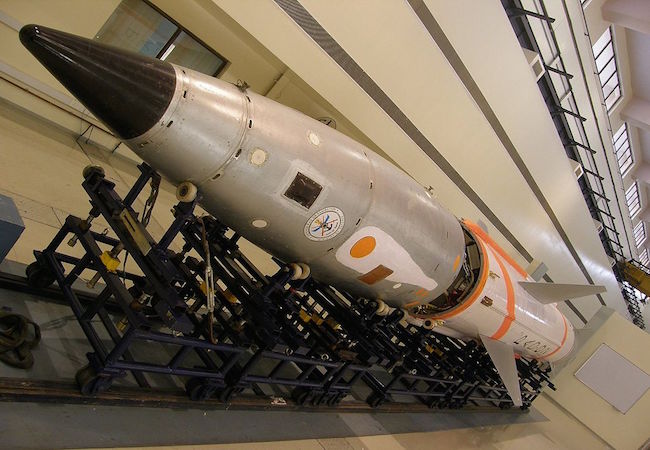Counterforce, short-range missiles and India: implications for the region

By Maimuna Ashraf
‘Splendid first-strike’ and ‘strategic ambiguity’ are lately being discussed as the twin strong emerging components of Indian nuclear policy. In previous few years, the BJP’s manifesto and views expressed by former Indian officials hinted towards the inside deliberations regarding India’s use of nuclear weapons.
The debate rekindled when the renowned strategist Vipin Narang, at a recently held Carnegie International Nuclear Policy Conference, cited excerpts from the book of India’s Former National Security Adviser Shivshankar Menon and claimed the “increasing evidence that India will not allow Pakistan to go first. And that India’s opening salvo may not be conventional strikes trying to pick off just Nasr batteries in the theater, but a full ‘comprehensive counterforce strike’ that attempts to completely disarm Pakistan of its nuclear weapons so that India does not have to engage in iterative tit-for-tat exchanges and expose its own cities to nuclear destruction.” This stirred up a number of suspicions; First, India is moving from its No-First Use (NFU) policy. Although the stated stance in its official doctrine of 2003, that undertakes massive nuclear retaliation in response to a preemptive strike (by an adversary) to inflict unacceptable damage and nuclear use against chemical/ biological weapons, have had already questioned the sanctity of India’s NFU posture. The NFU refers to a policy that state possessing nuclear weapon will not use them unless first attacked by an opponent’s nuclear strike. Second, the precept specifies that this strike by India would be ‘counterforce’ that refers to target enemy’s nuclear weapons and military infrastructure rather than existing counter-value strategy, which aims at targeting adversary’s civilians and cities.
In the words of Charles Bolton, Counterforce is “maintenance of superiority in nuclear weapons and their delivery systems sufficient to destroy the enemy’s nuclear striking power, with enough force left over to hold the enemy’s cities hostage against a threat of retaliation by any of his delivery systems that may have escaped the destruction.” Developing a variety of short-range/tactical missiles, having different ranges and yields, infer that a country is holding on to a war-fighting or war-winning strategy. Analysts have different assessment on the number of weapons needed to implement such a strategy required to be in hundreds. However critics say that “as with tactical nuclear weapons, quality is more important for strategic weapons than quality. If, as has been suggested already, these weapons should be used only in a counterforce mode, they should need to be extremely accurate. To be sure, not all counterforce strikes require the highest degree of accuracy. Airfields, naval bases, army bases and many military manufacturing facilities are large enough to make it possible for many present-day missiles to hit them with relative ease. But there are certain other military targets, such as missiles silos (those still loaded after the first strike), command headquarters, and communication facilities, that would challenge missile and warhead technology to the utmost. Nonetheless, weapons capable of hitting these kinds of targets are required for maintaining a credible nuclear deterrent. No doubt, this means that expenditures on these weapons should not be diminished significantly in the future.”
These shifts indicate India is aiming for high level of readiness and launch-on-warning mode of its nuclear arsenals. The trends are consistent to pre-emptive tendency and are paradoxical to Indian stated minimum deterrence posture and centralized command and control. Whereas, the development of shorter range ballistic missiles defy massive retaliation policy.
Previously, the retaliatory policy or NFU gave India a rationale to develop new capabilities and improve range and yield of its nuclear missiles to build defense against opponent. Resultantly, the introduction of Ballistic Missile Defense (BMD) and sea-based capabilities in South Asia triggered an unnecessary arms race in the region. Now this latest ambiguous mixture of offensive defensive capabilities is treacherous and confuses the concept of deterrence stability in the region. However, India’s ‘ace in hole’, the flexibility of fist use in no-first use policy, if exists, will adversely impact the region. The mounting strategic ambiguities will not only invigorate the ‘use them or lose them’ dilemma in crisis time but also perplex the deterrence posture, induce aggressive strategies, lead to war-fighting capabilities, lower the threshold and increase the alertness level in already murky South Asia.




